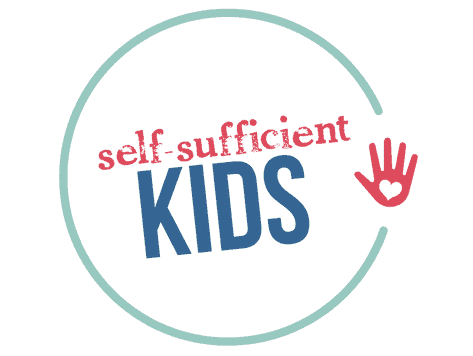The Secret to Teaching Kids to Save Their Money
Teaching kids to save their money is more of an art than a science. Here are some tips to help you succeed.

(This post contains affiliate links. If you click on a link and purchase the item, I will receive a commission at no extra cost to you.)
“Mom, can I get this with my allowance?” my six-year-old asks, holding a squishy emoji keychain.
“Didn’t you tell me last week you were saving up for a Lego airplane set?”
“Yeah, but…I just want to get this.” she counters, looking up at me with no sign of remorse.
My girls had learned a lot over the past year from managing their allowance. For example, they now had a better understanding of prices and affordability.
Yet, all too often, their intention to save for a larger purchase was sidelined once an alluring trinket caught their eye.
Saving money still seemed like an elusive concept for them. And yet research shows that teaching kids how to delay gratification is one of the most important money lessons parents can teach.
I felt stuck. How could I get my girls to understand that saving for a considered, planned purchase could give them greater satisfaction than wasting their money on a small, impulse buy?
Shortly after we returned from the store – where yes, my daughter purchased her emoji – I began to think of and research ways I could better teach my kids the importance of saving.
Here’s what I found:
Simply creating a “save” jar isn’t enough
On the first day my girls received an allowance, I created three jars: “Spend”, “Save”, and “Give”. The idea was to provide them with a bit of insight into how to budget money.
So, for example, my six-year-old’s three dollar weekly allowance was split by putting two dollars in the “Spend” jar and 50 cents each in the “Save” and “Give” jars.
However, what I soon found is that the save jar didn’t teach my kids a thing about saving money.
Even though 50 cents was placed in the “Save” jar each week, in my daughter’s mind that money was no different than the money in her “Spend” jar. Both were sitting right there, available for day-to-day purchases as far as she was concerned.
Writing down goals helps
To help my daughter distinguish between money saved and money available to spend, I started having both my girls write down their savings goals.
With the Lego set, my daughter had talked about a goal but had never actually written it down. Having her specific goal written down made it more tangible. And keeping track of weekly savings would let her see how far she’d come in achieving her goal.
After printing out a few of the savings sheets below, I placed them in binders so each week my daughters could make a note of how much money was in their savings jar, letting them see how much closer they were to their goal.
Sign up for my weekly newsletter where I share tips on how to raise independent, self-sufficient kids. You’ll also receive my Kids’ Save, Spend, Share Ledger as a free gift.
Interest as a motivator
The savings sheets helped somewhat – and a few minor goals were achieved – but it was still clear that my girls didn’t quite see the full benefit of saving their money.
I considered what motivates adults to set money aside. Sure, many adults are motivated by the prospect of achieving a goal, but what adds to the incentive is interest payments that grow money.
While I contemplated opening a bank savings account for my girls, interest rates were so low that I knew they would barely see any increase in their account.
So instead, I decided to play the role of bank and set my own interest rate. At the end of every month, I provided a 10% interest payment for any money in savings. This meant that if there was $10 in savings it would turn into $11 – enough to encourage young kids to keep setting money aside.
If your kids already have a solid understanding of physical bills and coins, it could be a good time to use a service like Greenlight. In addition to automatically depositing allowance money in a separate account for kids each week (or month) through its app and debit card system, Greenlight also provides a feature that lets kids set money aside into a savings account with an interest rate that parents decide. Click on the logo below to learn more:
Stories can inspire
Beyond writing down goals and providing interest payments, I’ve also discovered that stories can be educational and inspire kids to keep saving.
I’ve shared a few stories with my girls of times when I had to save – for my first car, for example – to provide insight into how saving works in the adult world, where purchases are larger and more critical.
We’ve also read a few books together that specifically highlight what happens when people stick to a savings goal (or don’t).
Three books we’ve enjoyed reading include:
See Related: 28 Children’s Books About Money
Practice makes perfect
“Mom, how much money do I have?” my now 8-year-old daughter asked the other week while we were rummaging around a stationary store.
I told her how much, after checking the amount on my Greenlight app .
“Hmmm….” she muttered, staring at a package of puffy heart stickers.
For weeks she’d been saving up to buy a BFF necklace to share with her friend at school.
A few years ago, this longed-for item would have quickly been forgotten. But lately, I’d noticed my daughter was more committed to reaching her savings goals, even if it meant not purchasing a dozen sparkly heart-shaped stickers she described as “cool”.
At ages ten and eight, my girls are hardly champion savers but progress has happened. And as with everything in parenting, progress is the goal.
And at least for now, we have fewer emoji keychains cluttering our house.
See related:
Kids Won’t Really Understand Money Until You Do This
How to Teach Kids to Delay Gratification in a “Buy Now, Pay Later” World
7 Things You Should Stop Paying for Once Your Kids Have an Allowance
About the Author

Kerry Flatley is the owner and author of Self-Sufficient Kids. She has a BA in economics, an MBA, a certificate in financial planning, and has been investing ever since she landed her first job. Kerry also has two girls, ages 11 and 13, who have been receiving allowance – and learning money management – for the past five years.

